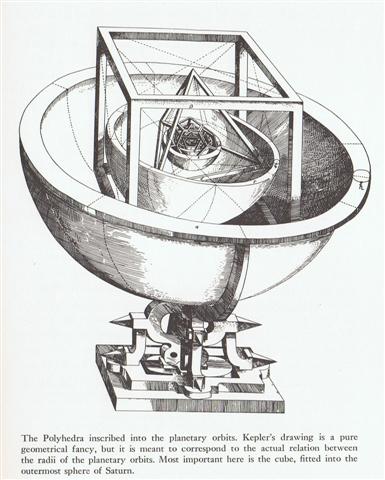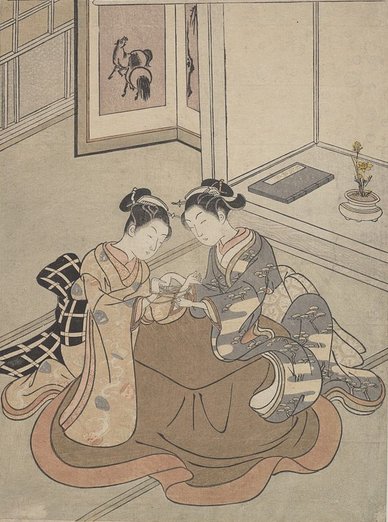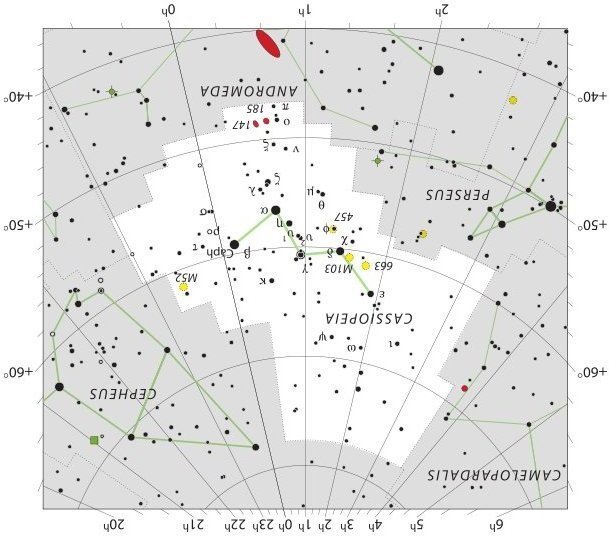A star at the pole ought to come just before the beginning the order of calendar time, because this would illustrate by way of contrast how the murky times of wobbling uncertainty were quickly dispersed at dawn. Let there be L - Light!
Polaris rose in the night before the 1st Point of Aries and when 3 precessional days earlier Thuban had been at the Full Moon it would have been a Sign that the Sun was about to reach Hamal:
Likewise, dark clouds and rain ought to be followed by the beautiful colours generated from the Sun rays. ... The life-force of the earth is water. God moulded the earth with water. Blood too he made out of water. Even in a stone there is this force, for there is moisture in everything. But if Nummo is water, it also produces copper. When the sky is overcast, the sun's rays may be seen materializing on the misty horizon. These rays, excreted by the spirits, are of copper and are light. They are water too, because they uphold the earth's moisture as it rises. The Pair excrete light, because they are also light ... 'The sun's rays,' he went on, 'are fire and the Nummo's excrement. It is the rays which give the sun its strength. It is the Nummo who gives life to this star, for the sun is in some sort a star.' It was difficult to get him to explain what he meant by this obscure statement. The Nazarene made more than one fruitless effort to understand this part of the cosmogony; he could not discover any chink or crack through which to apprehend its meaning. He was moreover confronted with identifications which no European, that is, no average rational European, could admit. He felt himself humiliated, though not disagreeably so, at finding that his informant regarded fire and water as complementary, and not as opposites. The rays of light and heat draw the water up, and also cause it to descend again in the form of rain. That is all to the good. The movement created by this coming and going is a good thing. By means of the rays the Nummo draws out, and gives back the life-force. This movement indeed makes life. The old man realized that he was now at a critical point. If the Nazarene did not understand this business of coming and going, he would not understand anything else. He wanted to say that what made life was not so much force as the movement of forces. He reverted to the idea of a universal shuttle service. 'The rays drink up the little waters of the earth, the shallow pools, making them rise, and then descend again in rain.' Then, leaving aside the question of water, he summed up his argument: 'To draw up and then return what one had drawn - that is the life of the world.' Red and yellow feathers appear in front in glyph 384 (= 2 * 192), and in Cb1-6 (at 'dawn') the Tree (Tane) broke through, with the wonderfully blinking Mira star in the following day:
There were 12 days from the blinking Mira to the blinking Algol. Sometimes they were bright, sometimes not so. They were variable stars and they illustrated the pivotal time before the Sun definitely had left the horizon and string games once again could be played. A campfire close to burning out completely into grey ashes has a tendency - not shared by a newly alighted fire - to give off sudden flames generated from its glowing coals. Both Mira and Algol should therefore belong at the end rather than at the beginning of the year of Sun light. At the time of rongorongo Algol rose heliacally in day 45 counted from 0h. Saturn must have been here because 125 = the cube of 5.
... The divine names Bran, Saturn, Cronos ... are applied to the ghost of Hercules that floats off in the alder-wood boat after his midsummer sacrifice. His tanist, or other self, appearing in Greek legend as Poeas who lighted Hercules' pyre and inherited his arrows, succeeds him for the second half of the year; having acquired royal virtue by marriage with the queen, the representative of the White Goddess, and by eating some royal part of the dead man's body - heart, shoulder or thigh-flesh. He is in turn succeeded by the New Year Hercules, a reincarnation of the murdered man, who beheads him and, apparently, eats his head. This alternate eucharistic sacrifice made royalty continous, each king in turn the Sun-god beloved of the reigning Moon-goddess. But when these cannibalistic rites were abandoned and the system was gradually modified until a single king reigned for a term of years, Saturn-Cronos-Bran became a mere Old Year ghost, permanently overthrown by Juppiter-Zeus-Belin though yearly conjured up for placation at the Saturnalia or Yule feast ... Anciently when the year had been put in parallell with its main stars (i.e., 68 precessional days before the time of rongorongo) Algol had been rising with the Sun in *FEBRUARY 26 (57 = *343 + 80 - *366) = 27 nights before *MARCH 25 (84). In other words 15 nights before *MARCH 13 (π). 15 + 12 = 27 (= 3 * 3 * 3) = 3 * 5 + 3 * 4. Here the most significant ancient time seems to have been when Bharani was at 0h. The little sleepy bird with navel string in front could represent "September 22 (equinox). Strings were not allowed close to spring equinox but should be played with at autumn equinox, when the Nose of the Sea Beast was at the Full Moon. Cat's cradles were nets.
... The text on side a was beginning after the 'tail of the horse' (Ma Wei, δ Centauri), i.e. after the night when the Rear (2nd) Spout was at the Full Moon. Artists had the ability to compress and play with such information in their creations, and we should notice the pair of 'spouts' in form of flowing hair in the framed picture on the wall screen (cfr 14th Chinese station Wall) ... The folded wall screen in the background, carrying a picture of horses, could have been put there to be in harmony with the form of Cassiopeia - cfr Cb1-13.
... With α Andromedae [Sirrah] and γ Pegasi [Kerb], as the Three Guides, it [Caph] marks the equinoctial colure, itself exceedingly close to that great circle; and, being located on the same side of the pole as is Polaris, it always affords an approximate indication of the latter's position with respect to that point. This same location, 32º from the pole, and very near to the prime meridian, has rendered it useful for marking sidereal time. When above Polaris and nearest the zenith the astronomical day begins at 0 hours, 0 minutes, and 0 seconds; when due west the sidereal time is 6 hours; when south and nearest the horizon, 12 hours, and when east, 18 hours; this celestial clockhand then moving on the heavenly dial contrary to the motion of the hands of our terrestrial clocks, and at but one half the speed ... "Those in the head [of Cetus], α, β, γ, δ, μ, ξ¹, and ξ², were Al Kaff al Jidhmah, the Part of a Hand, from a fancied resemblance to their Stained Hand, our Cassiopeia ..." (Allen)
|
|||||||||||||||||||||||||||||||||||||||||||||||||||||||||||||||||||||||||||||||||||||||||||||||||||||||||||||||||||||||||||||||||||||||||||||||||||||||||||||||||||||||||||||||||||||||||























